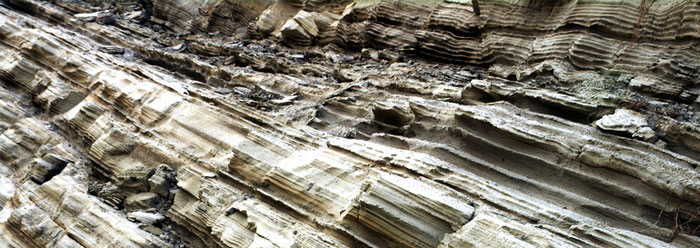Ninety percent of marine and 70 percent of terrestrial creatures perished suddenly in an event variously called the Permian extinction, the Permian–Triassic (P-Tr) extinction, or the Great Dying. The calamity’s cause, referred to as the K-T event, remains unknown, even though asteroid impact has been in vogue.
At least, this is the account that has been repeated for several decades. Now, a recently-published study is showing that evidence of the Permian extinction is not limited to a single rock stratum.1 The whole story must be rewritten.
Robert Gastaldo, a geologist at Colby College in Maine, re-visited each of the previously-reported Permian extinction sites in South Africa. It took six trips for him to establish that the Permian extinction event is actually recorded in different rock layers instead of one continuous layer. He painstakingly traced each site laterally, and each time the characteristic layer fizzled out less than 100 meters away. Thus, this “new” version of history required a series of calamities that befell the earth, killing off its inhabitants in waves over a time period that supposedly lasted “hundreds of thousands of years.”2
Gastaldo explained his logic to Science: “Because the boundary event bed doesn’t occur at the same position in the rock record, there can be no one, unique event.”2 But this conclusion relies on the assumption that each rock layer represents millions of years of earth history. This also leaves the question of why different rock layers—supposedly separated by vast ages—have such similar chemistry that they are identifiable as P-Tr rocks. Is it likely that different asteroids with somehow identical chemistries impacted the earth every 50,000 years or so, producing the same signature in rocks each time?
The geological evidence testifies to rapid deposition of sedimentary layers, one after the other, rather than to eons of time. For example, polystrate fossils (which intersect more than one rock layer) of soft-bodied organisms are abundant, showing that whatever layers they occupy must have been formed faster than their bodies could decay. Rock strata can be formed within hours, as was demonstrated at Mount St. Helens, where several hundred feet of layered sediment was rapidly deposited with sharp contacts between the layers, quite like other layers observed around the world.3
The Flood of Noah has powerful implications in the context of this P-Tr extinction research. First, the fact that many more land creatures survived this calamity than marine creatures makes sense if God preserved the land creatures in a giant watertight box built by Noah and his sons for that purpose.4
Second, perhaps the layers that Gastaldo traced were formed from tidal oscillations that occurred while the earth was still underwater during the year-long Flood. In that case, the geochemical signatures and extinct fossilized creatures found in these P-Tr boundary rocks could be remnants of volcanic debris and floating animal carcasses that were on the earth’s surface during those few days or weeks.
In other words, if the rock layers do not represent vast eons, then they quite possibly do contain evidence of “one, unique event.” And given the reliability of the written record of the global Flood event, this possibility becomes probable.
References
- Gastaldo, R. A. 2009. The terrestrial Permian-Triassic boundary event bed is a nonevent. Geology. 37 (3): 199-202.
- Berardelli, P. The Catastrophe That Wasn’t. ScienceNOW Daily News. Posted on sciencenow.sciencemag.org on March 3, 2009, accessed March 6, 2009.
- Austin, S. A. 1986. Mount St. Helens and Catastophism. Proceedings of the First International Conference on Creationism. Pittsburgh, PA: Creation Science Fellowship, 3-9.
- Woodmorappe, J. 1996. Noah’s Ark: A Feasibility Study. Santee, CA: Institute for Creation Research.
* Mr. Thomas is Science Writer at the Institute for Creation Research.
Article posted on March 18, 2009.














